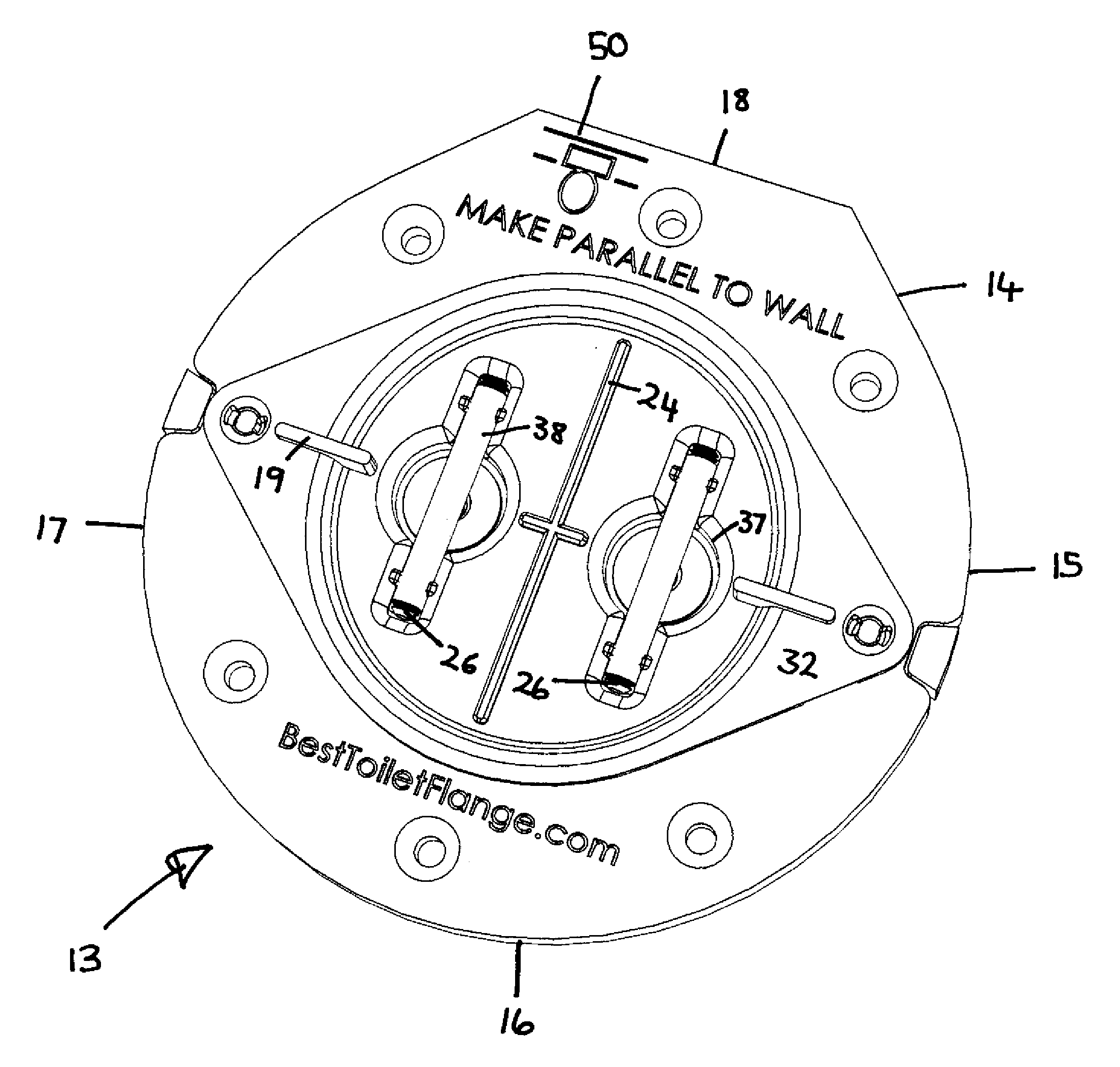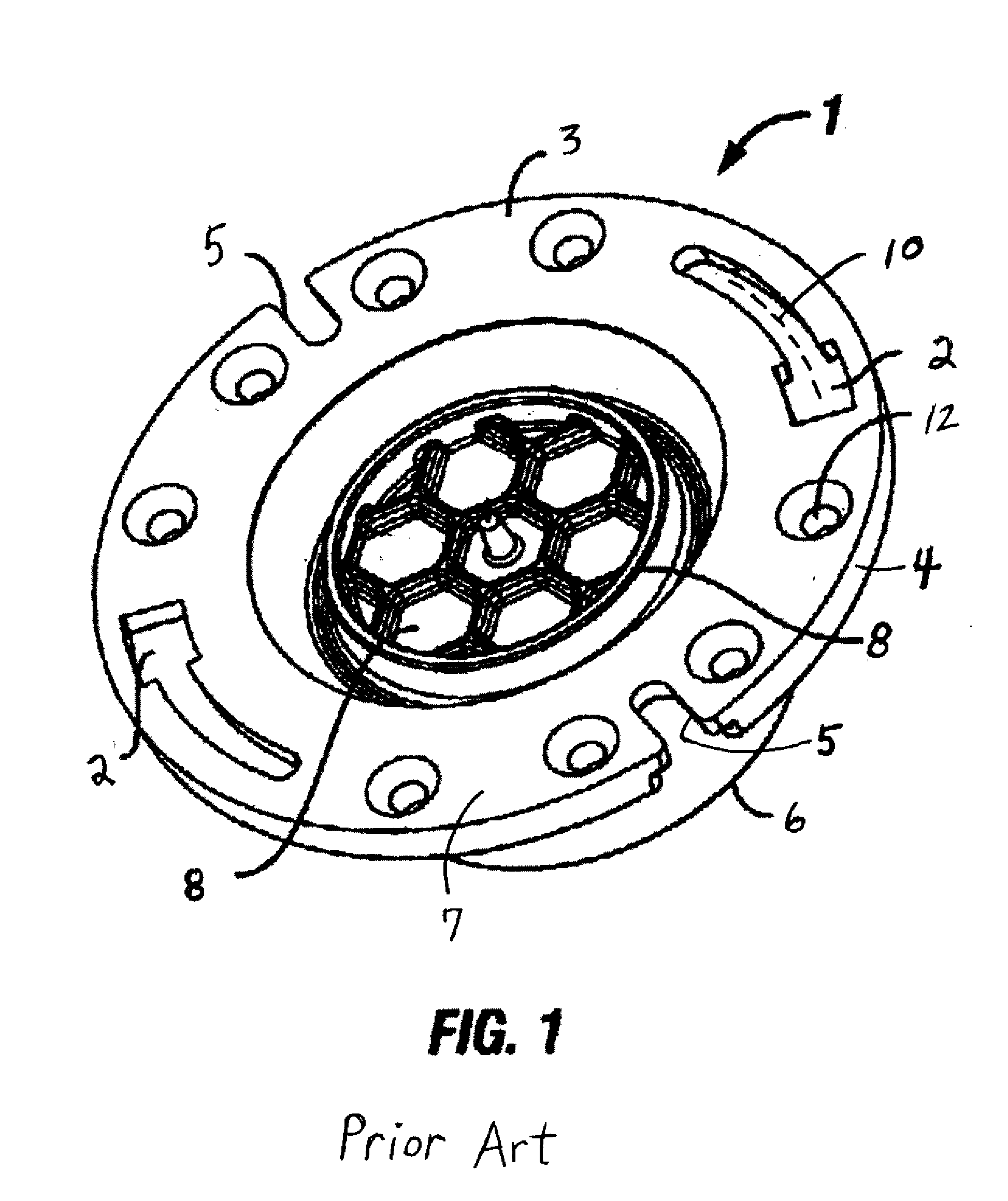Toilet Flange Assembly With Cover
a technology for toilet flanges and covers, which is applied in water closets, water installations, construction, etc., can solve the problems of increasing the structural integrity of toilet flanges and saving manufacturing costs, and achieves the effects of convenient reattachment, convenient placement, and easy removal
- Summary
- Abstract
- Description
- Claims
- Application Information
AI Technical Summary
Benefits of technology
Problems solved by technology
Method used
Image
Examples
Embodiment Construction
[0028]Referring to the drawings, wherein like reference numerals are used to designate like parts, FIG. 4 shows a preferred embodiment of the closet or toilet flange 13 in accordance with the present invention which comprises a body having an outer perimeter surface 14 which is shaped with rounded perimeter side portions 15, 16, 17 and at least one perimeter straight surface portion 18. The straight surface portion 18 is also planar in the plane perpendicular to the subfloor onto which the flange is secured so that a straightedge 55, such as a conventional level, can be abutted against the planar straight surface 18 to function as a visual aid (FIG. 11) in extending the line 20 (FIG. 5) of the straight portion 18 parallel to a future finished wall surface. The radial dimensions of the toilet flange are sized so that the perimeter rounded side portions 15-17 and the straight surface portion 18 properly fit within the recess of a conventional toilet base (not shown). Unlike convention...
PUM
 Login to View More
Login to View More Abstract
Description
Claims
Application Information
 Login to View More
Login to View More - R&D
- Intellectual Property
- Life Sciences
- Materials
- Tech Scout
- Unparalleled Data Quality
- Higher Quality Content
- 60% Fewer Hallucinations
Browse by: Latest US Patents, China's latest patents, Technical Efficacy Thesaurus, Application Domain, Technology Topic, Popular Technical Reports.
© 2025 PatSnap. All rights reserved.Legal|Privacy policy|Modern Slavery Act Transparency Statement|Sitemap|About US| Contact US: help@patsnap.com



